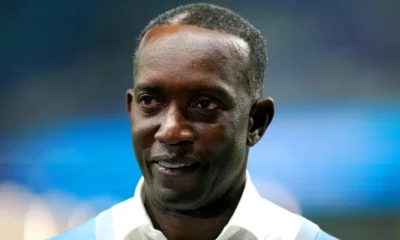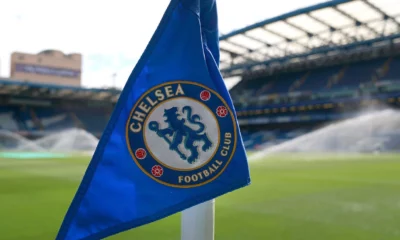ENGLAND pulled off a comfortable 3-0 victory against Senegal to progress into the quarter-finals of the World Cup – but only after a rather uncomfortable and nervy first half hour.
Gareth Southgate’s side will now prepare to face France who looked scintillating in their 3-1 win over Poland before England’s game on Sunday.


And today the nation can thank manager Southgate for his tactical switch mid-game that turned the Senegal game on its head.
Senegal made a really good start, creating numerous excellent opportunities including one which was expertly saved by Everton goalkeeper Jordan Pickford at a tight angle to keep the scores level.
Aliou Cisse’s men were pressing high, forcing the Three Lions into uncharacteristic mistakes and wreaking havoc in transition.
However, once Jordan Henderson opened the scoring, England were in cruise control.
A goal from Harry Kane right before half-time and a third from a Bukayo Saka chip over Chelsea keeper Edouard Mendy in the second half put the game to bed, booking England’s place in the quarters.
The Three Lions had much more quality on paper than their counterparts on the night, but it was Southgate’s strategic tweaks that turned the game on its head.
Here are three key tactical areas where the game was won and lost between England and Senegal.
Senegal’s pressing traps
England have used a 4-3-3 to great success throughout the tournament, a formation that suits the players in the squad and allows for more control in possession which has proven useful in each game as the side have dominated the ball in every match.


Southgate wants his players to build out from the back.
During this phase, the centre-backs split wider and the fullbacks push a little higher while Declan Rice floats behind the opposition’s forward line.
Rice, over the course of the tournament, has been England’s link-man between the backline and the forwards.
England’s centre-backs Harry Maguire and John Stones pass the ball between themselves and Pickford in goal, waiting for the right opportunity to play in Rice who can then turn and progress it forward.
However, against Senegal, Cisse set his team up in a way that denied England’s central defenders the opportunity to reach Rice.
To do this, the Lions of Teranga deployed a 4-4-2 out of possession, with the two frontmen sitting on Rice, blocking the passing lane into the West Ham United skipper.


England struggled without being able to find Rice in his preferred area.
Instead, the players were forced to go wider out to the fullbacks in the hopes that Luke Shaw and Kyle Walker could play down the line.
Senegal’s defensive plan was perfect.
Once the ball was moved to the flanks, they would aggressively close the fullbacks down, winning it back and hitting the space in behind which the nation have done incredibly well throughout the World Cup.
This is called a wide pressing trap.
Where the Netherlands forced the USA into central pressing traps on Saturday to great success before hitting their forwards into the channels during counterattacks, Senegal prefer doing so out wide.
This is because the players can use the touchline as an extra defender since the fullbacks have limited space to play into.
Once possession was recouped, Senegal would attack with pace and power in transition and England were unable to cope.


Southgate’s rethink
The gameplan from Cisse was superb from the get-go and it meant that Southgate would have to rethink his own tactical blueprint.
Many pundits and supporters alike have criticised Southgate’s nous, citing it as the main reason that England have not managed to go all the way in a major tournament during his reign with the national side.
Last night, the manager silently proved many wrong.
He tweaked England’s structure in possession which allowed his players to find it much easier to progress play through Senegal’s press and reach attackers further up the pitch.
In the 4-3-3, the two central midfielders push into higher areas, often roaming between the lines close to the front three.
This gives England a line of five attacking players when play eventually reaches the forwards.
Due to the team’s difficulties finding Rice behind the Senegalese front two, Southgate instructed Jordan Henderson to drop deeper alongside the holding midfielder, giving England’s centre-backs two options in this space.




This was a simple but game-changing move by Southgate.
It gave England fewer players in advanced positions but helped balance the side in possession.
The main reason was because, not only did it offer the centre-backs an extra passing option behind the opposition’s front two, but one of the Senegal’s double-pivot were forced to step up and mark the Liverpool captain, leaving space in the African champions’ midfield line.
This unbalanced Senegal’s 4-4-2, allowing Harry Kane and Jude Bellingham to drop shorter into the space vacated by the player who pushed up to mark Henderson.
Kane, in particular, played much deeper in this game than any other at the World Cup so far.
England were constantly able to find him in lower areas unmarked so that the Tottenham star could turn and play forward.


Deadly in transition
Senegal proved to be dangerous on the break in the first half and looked likely to score within the opening half hour.
But it was England who turned out to be the deadliest and most efficient with their counterattacks during the game.
As the team have done so far at the coveted competition, the Three Lions dominated possession of the ball, registering 62 per cent against Senegal.
Nonetheless, it was the side’s counterattacking prowess which proved to be the undoing of Senegal who began piling men forward in search of a goal.
Cisse’s Senegal smelled blood and knew that they could open the scoring, pushing players into higher areas to try and score past Pickford.


This left a lot of space for England to hit Senegal in transition, which Southgate’s players did very effectively.
Bellingham spearheaded most of England’s counterattacks.
The Borussia Dortmund starlet proved to the world how good he is at carrying the ball and was able to bypass Senegalese pressure with ease.
With Kane, Phil Foden, and Saka combining with Bellingham, Senegal didn’t stand a chance as England displayed some wonderful coordination during transitional moments and took advantage of their opponents naivety in possession.


Despite coming away with the lion’s share of possession in this match, England scored twice from counterattacks, showcasing the team’s attacking flexibility.
The side can dominate the ball and beat teams with some poetic patterns of play while also being menacing on the break.
It is this unpredictability in games that have allowed England to go far in the last two tournaments and is the reason why they are also one of the favourites to take home the crown for the first time since 1966.


So what does this all mean?
England won’t have an easy ride to the final, should they get that far.
In previous tournaments and in qualifiers too, critics have been outspoken about the lack of high-quality opposition that the Three Lions have faced.
In Southgate’s two World Cups so far, England have beaten, Panama, Tunisia, Colombia, Sweden, Iran, Wales and now Senegal, losing to Belgium twice as well as Croatia.
There is a clear pattern that Southgate’s men have struggled against better opposition on the grandest stage.
However, victory over France this coming Saturday in the quarter-final would prove many doubters wrong.
And quick-thinking Southgate has shown that he can adapt his tactics mid-game and turn the match on its head.
For even more detailed analysis of the FIFA World Cup 2022, download your copy of the December Total Football Analysis magazine here
Must See
-
Other Sports
/ 4 months agoTransfer: Galatasaray target January move for Onyedika
Turkish Super Lig champions Galatasaray are lining up a January move for Club Brugge...
By Amaka Esther -




Other Sports
/ 4 months agoMan Utd too big for you – Ten Hag told to leave club
Former Tottenham Hotspur star, Darren Bent has claimed that Manchester United are too big...
By Amaka Esther -




Other Sports
/ 4 months agoEPL: Yorke tells Ten Hag not to allow Man Utd star near first team
Manchester United legend Dwight Yorke has told manager Erik ten Hag not to allow...
By Amaka Esther








